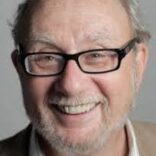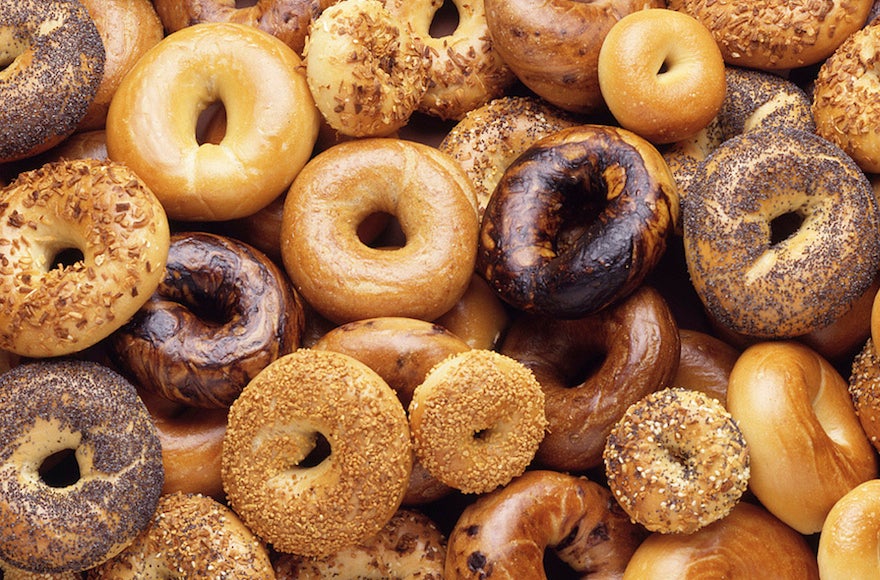There was a young lady of title
Who insisted on wearing a sheitel.
She didn’t care much
For kashrut and such,
“But the sheitel,” said she, “now that’s vital!”
(JTA) — As the old limerick suggests, there has long been a tradition of picking and choosing Jewish observance in America, whether it involved keeping kosher or observing Shabbat, or, in this case, covering your hair with a wig (a sheitel) if you’re a married woman.
But in America today, choice has come to occupy a central place not merely in how Jews practice Judaism but in the very way they conceive their religious identity.
Over the past several decades, Americans have come to regard their religion less and less as an ascribed identity — as something they were born into — and increasingly as what they choose to be at the present time. This shift has had a particularly dramatic effect on Jewish Americans, in whose tradition religious identity had for millennia been ascribed at birth. The tension between ascription on the one hand, and choice on the other, informs American Jewish religion.
How is the Jewish community responding to this new regime of choice? That is the central concern of our new book, “The Future of Judaism in America.” Understanding religious identity as chosen is crucial to understanding the future of Judaism in the context of its denominations, its numbers, its relationships with other faith communities, its stance on public affairs — and, perhaps most important, its ability to renew itself in response to pressures from outside and from within.
Let’s consider the different denominational streams.
Reform, after steady growth in synagogue membership from the late 1970s until the new century, is no longer the fastest-growing movement. Still, Reform in America, while it struggles with the boundaries of “who is Jewish,” has lowered the barriers to participation in its brand of Judaism. “Inclusiveness” is the byword for contemporary Reform, both externally (outreach to non-Jewish spouses), and internally, by welcoming those Reform Jews who choose to embrace rituals — tallit and kippah and tefillin, mikveh, full synagogue services — traditionally considered outside the sphere of a movement that does not regard halacha, or traditional rabbinic law, as binding. “Reform Judaism teaches that each of us is an autonomous individual, able to make thoughtful, religious choices,” said Rabbi Rick Jacobs, the president the Union for Reform Judaism, at his installation a decade ago.
Have Reform’s accommodations worked? So far, the answer appears to be “yes,” as the percentage of Reform in American Jewry has remained stable at around 35-40% for decades.
For its part, the question for the Conservative movement is more about ascribed identity than about anything else. The movement is struggling with the question of how long it can sustain its policy of forbidding its rabbis from performing marriages between Jews and non-Jews. (The question is of a piece with the angst always felt by Conservative leaders when their commitment to halacha collides with the movement’s commitment to change.) The question of intermarriage is central to the future of Conservative Judaism, as its contemporary identity is defined and has always been defined by the clear line it draws between Jew and non-Jew. This dilemma, in addition to the host of serious issues that plague the movement — not the least of which is a precipitous decline in Conservative’s numbers, from 43% to 17% of those who identify with a denomination over some two decades — suggests that the future of the Conservative qua independent movement is highly uncertain.
Many analysts (including several authors in our book) suggest that Reform and Conservative Judaism will ultimately merge and become a single heterodox movement. That, or Conservative will remain as a smaller movement, concentrated in large population centers.
Orthodoxy, meanwhile, claims 17% of Jews ages 18 to 29, compared with just 3% of Jews 65 and older, according to Pew. If current trends continue, their proportion of the entire Jewish population in America will grow from a small minority to a dominant majority by the end of the century.
Yet there is no one “Orthodoxy” in America. Orthodoxy is expressed in Modern and Centrist forms, the many flavors of Hasidism, the numerous forms of non-Hasidic “haredi” Orthodoxy, Chabad-Lubavitch and the Orthodoxies that push the religious and ritual envelope in countless ways. It’s about choice.
But the price for Orthodoxy may be high, as the increased fractionalization of the movement demonstrates. Haredi groups (what we call Sectarian Orthodox, and others call “ultra-Orthodox”) operate by preventing choice, especially in some of the more sectarian Hasidic groups that create barriers to prevent adherents from leaving. More progressive Orthodox groups have adopted strategies that accommodate choice.
Orthodoxy will remain strong, but its future presents no consistent pattern.
Understanding Jewish Renewal is central to understanding the present and future of American Judaism. The varied expressions of Jewish Renewal that took root in the 1960s and ’70s — the havurah movement, Jewish feminism, practices that bear its spiritual approach — found newer expressions in communities such as Kehillat Hadar in New York; Yeshivat Maharat, which provides Orthodox ordination to women; The Kitchen in Los Angeles; “partnership” minyanim that maximize women’s participation within the parameters of traditional halacha, or Jewish law, and New York’s unaffiliated B’nai Jeshurun congregation. Indeed, while the formal structures that generated Renewal recede in memory, Renewal has had a broad and deep impact on American Judaism and on American Jewish life.
The impulse of Renewal, whatever its varied expression, was and is to create alternatives to the prevailing Jewish movements and forms. These alternatives are “chosen” ways of participation, and Renewal is yet vibrant.
The wildcard in American Judaism is, of course, the “nones,” those who identify as Jews of no religion. According to Pew, the percentage of U.S. Jews who do not claim any religion is 27% — higher among the young and going up. The future of Judaism in America will depend in part on the relative percentages of Jews with religion and Jews of no religion: Which will grow, and which will decline?
What has changed in American Jewish religious life? It is what Will Herberg, in his landmark book “Catholic-Protestant-Jew,” did not see in the 1950s: There is no longer any pressure to remain within any given religious community, nor in any movement or stream of Judaism, nor within Judaism itself (as the rise of the “nones” suggests). The American Jewish religious future — for all the movements, denominations and post-denominationalists — will be positioned in this dynamic.
When religious identity is increasingly seen as a matter of personal choice, groups that have depended upon ascribed identity to guarantee their numbers will be challenged to develop not only new means of keeping and attracting members but also new ways of conceptualizing and communicating who and what they are.
JTA has documented Jewish history in real-time for over a century. Keep our journalism strong by joining us in supporting independent, award-winning reporting.







